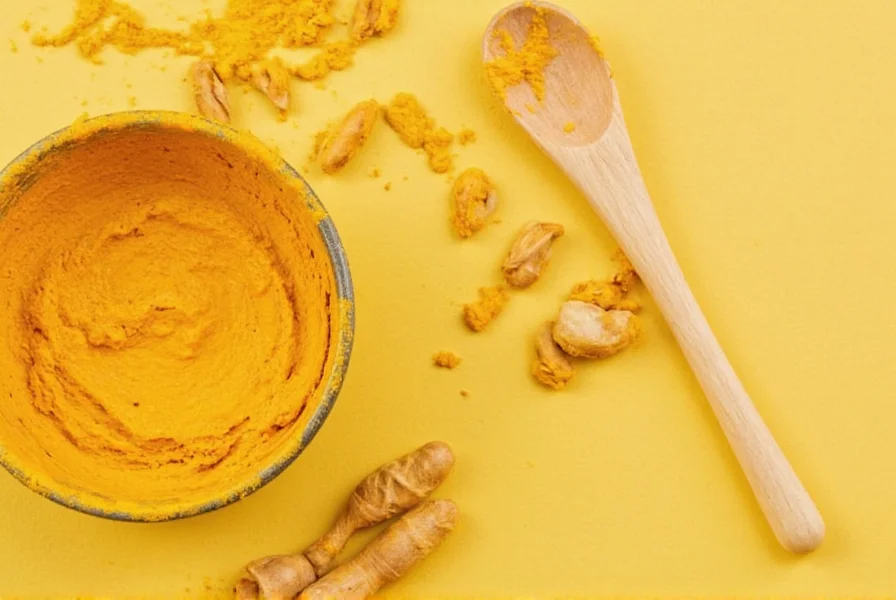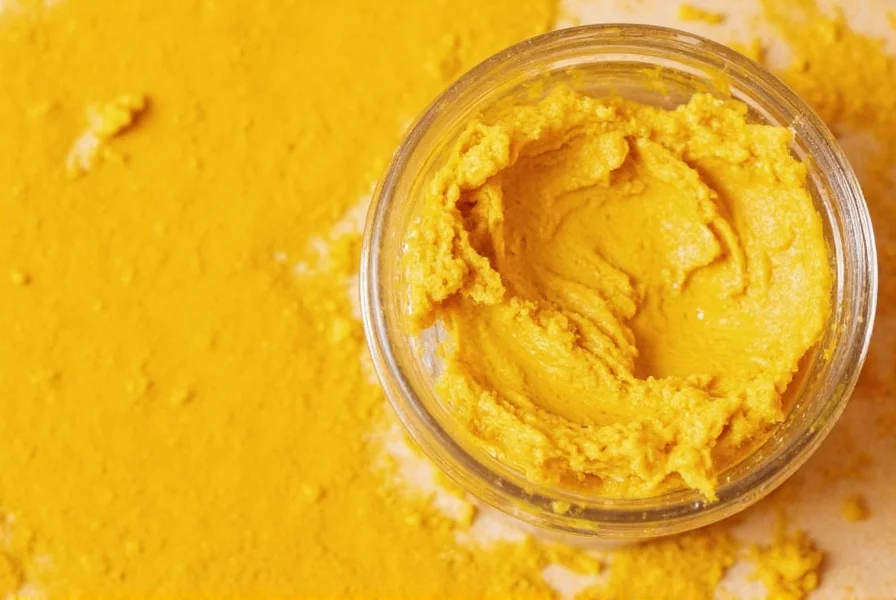Creating an effective facial mask using turmeric requires understanding both its powerful benefits and important limitations. This golden spice contains curcumin, a compound with documented anti-inflammatory and antioxidant properties that can benefit skin health when used correctly. However, improper use can lead to temporary skin staining or irritation, particularly for those with sensitive skin.
Science-Backed Benefits of Turmeric for Skin
Research indicates turmeric's active compound curcumin may provide several skin benefits when properly formulated in facial treatments. A 2016 study published in Phytotherapy Research found curcumin demonstrated significant anti-inflammatory effects that could help reduce skin inflammation associated with conditions like acne and eczema. The antioxidant properties in turmeric facial masks help combat free radical damage that contributes to premature aging.
Unlike many commercial skincare products containing synthetic ingredients, a homemade turmeric face mask allows you to control exactly what touches your skin. When combined with complementary natural ingredients like honey (for antibacterial properties) or yogurt (for gentle exfoliation), these DIY treatments can address multiple skin concerns simultaneously.
Effective Turmeric Facial Mask Recipes
Not all turmeric mask recipes deliver equal results. The right formulation balances efficacy with minimal risk of staining. Here are three science-informed recipes:
| Mask Type | Ingredients | Best For | Frequency |
|---|---|---|---|
| Gentle Brightening Mask | 1 tsp turmeric, 2 tbsp plain yogurt, 1 tsp honey | Dull skin, mild acne | 1x/week |
| Anti-Inflammatory Mask | 1/2 tsp turmeric, 1 tbsp aloe vera, 1 tsp oat flour | Sensitive or irritated skin | 1x/10 days |
| Deep Cleansing Mask | 1 tsp turmeric, 1 tbsp bentonite clay, 1 tsp apple cider vinegar | Oily skin, enlarged pores | 1x/week |

Proper Application Technique
How you apply your turmeric and honey face mask significantly impacts results and minimizes staining. Follow these evidence-based steps:
- Perform a patch test 24 hours before full application
- Mix ingredients in non-metallic bowl (glass or ceramic)
- Apply thin, even layer using fingertips or brush
- Leave on for 10-15 minutes (never exceed 20 minutes)
- Rinse with lukewarm water using gentle circular motions
- Follow with moisturizer to prevent dryness
For those concerned about potential yellow residue, adding a small amount of milk or yogurt to your turmeric facial mask recipe can help neutralize staining while enhancing skin benefits. Always remove makeup and cleanse skin thoroughly before applying any DIY mask.
Safety Considerations and Limitations
While turmeric offers potential skincare benefits, important limitations exist. The most common issue with turmeric face masks is temporary skin staining, particularly for those with fair complexions. This yellow tint typically fades within 24 hours but can be minimized by:
- Using no more than 1 teaspoon of turmeric powder per application
- Adding acidic ingredients like lemon juice (use with caution on sensitive skin)
- Thoroughly cleansing after the recommended time
- Avoiding application before important events
Individuals with known sensitivity to plants in the ginger family should avoid turmeric masks entirely. Those with chronic skin conditions like rosacea or severe acne should consult a dermatologist before trying any DIY treatments, as improper use could exacerbate existing conditions.
When to Seek Professional Advice
Natural remedies like turmeric facial masks work well for maintenance and mild concerns, but cannot replace medical treatment for serious skin conditions. Consult a dermatologist if you experience:
- Persistent redness or irritation lasting more than 48 hours
- Severe acne that doesn't respond to consistent care
- Sudden changes in skin texture or pigmentation
- Signs of infection including pus or excessive swelling
Professional skincare treatments may be necessary for concerns that don't improve with proper home care. A board-certified dermatologist can help determine whether your skin issues require medical intervention rather than natural remedies.
Maximizing Results from Your Turmeric Mask Routine
For best results with your turmeric and yogurt face mask, consistency matters more than frequency. Using your mask once weekly for 6-8 weeks provides better results than sporadic twice-weekly applications. Pair your mask routine with these complementary practices:
- Morning and evening cleansing with gentle, pH-balanced cleanser
- Daily broad-spectrum sunscreen (UV exposure counteracts antioxidant benefits)
- Adequate hydration and balanced nutrition
- Sufficient sleep (skin repairs during rest)
Remember that visible improvements from natural skincare treatments typically take 4-6 weeks of consistent use. Track your progress with weekly photos under consistent lighting to objectively assess changes in your skin's texture, tone, and clarity.
Frequently Asked Questions
How long should I leave a turmeric mask on my face?
Leave your turmeric facial mask on for 10-15 minutes maximum. Extended application increases staining risk without providing additional benefits. Always rinse with lukewarm water using gentle circular motions to avoid irritation.
Can turmeric masks remove dark spots effectively?
Turmeric's anti-inflammatory properties may help reduce the appearance of some dark spots over time, but results vary significantly by individual. For best results with hyperpigmentation, combine turmeric masks with daily sunscreen use and consider consulting a dermatologist for persistent discoloration.
Why does my face turn yellow after using turmeric mask?
The yellow staining occurs because turmeric contains natural pigments that temporarily adhere to skin. This is harmless and typically fades within 12-24 hours. To minimize staining, use no more than 1 teaspoon of turmeric per mask, add acidic ingredients like lemon juice (use cautiously), and always remove thoroughly with a gentle cleanser.
Can I use turmeric mask every day for acne treatment?
No, daily use of turmeric facial masks is not recommended. Limit application to 1-2 times weekly as more frequent use can cause irritation or dryness. For persistent acne, consult a dermatologist as professional treatments may be necessary alongside proper skincare routines.
What ingredients should I avoid mixing with turmeric in facial masks?
Avoid combining turmeric with harsh exfoliants like undiluted lemon juice or baking soda, which can damage your skin barrier. Also avoid mixing with strong essential oils that may cause irritation. Stick to gentle complementary ingredients like honey, yogurt, aloe vera, or oat flour for safe and effective turmeric face mask recipes.











 浙公网安备
33010002000092号
浙公网安备
33010002000092号 浙B2-20120091-4
浙B2-20120091-4